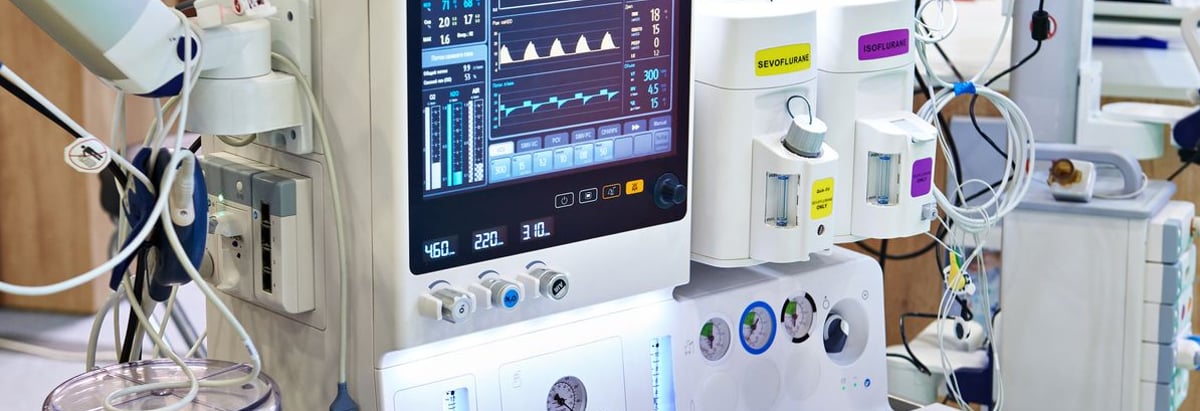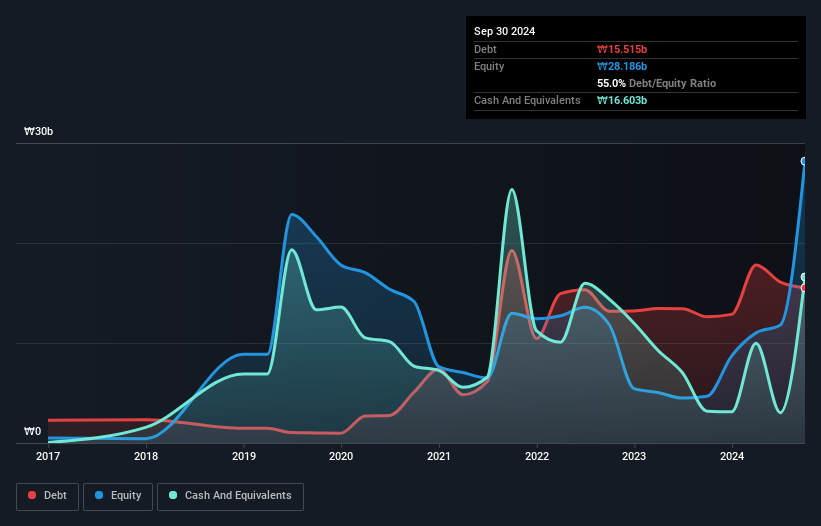- South Korea
- /
- Medical Equipment
- /
- KOSDAQ:A305090
These 4 Measures Indicate That Micro Digital (KOSDAQ:305090) Is Using Debt Extensively

Some say volatility, rather than debt, is the best way to think about risk as an investor, but Warren Buffett famously said that 'Volatility is far from synonymous with risk.' It's only natural to consider a company's balance sheet when you examine how risky it is, since debt is often involved when a business collapses. Importantly, Micro Digital Co., Ltd. (KOSDAQ:305090) does carry debt. But the real question is whether this debt is making the company risky.
Why Does Debt Bring Risk?
Debt and other liabilities become risky for a business when it cannot easily fulfill those obligations, either with free cash flow or by raising capital at an attractive price. In the worst case scenario, a company can go bankrupt if it cannot pay its creditors. However, a more frequent (but still costly) occurrence is where a company must issue shares at bargain-basement prices, permanently diluting shareholders, just to shore up its balance sheet. By replacing dilution, though, debt can be an extremely good tool for businesses that need capital to invest in growth at high rates of return. When we examine debt levels, we first consider both cash and debt levels, together.
View our latest analysis for Micro Digital
What Is Micro Digital's Net Debt?
The image below, which you can click on for greater detail, shows that at September 2024 Micro Digital had debt of ₩15.5b, up from ₩12.6b in one year. However, it does have ₩16.6b in cash offsetting this, leading to net cash of ₩1.09b.

How Strong Is Micro Digital's Balance Sheet?
The latest balance sheet data shows that Micro Digital had liabilities of ₩8.18b due within a year, and liabilities of ₩18.1b falling due after that. Offsetting these obligations, it had cash of ₩16.6b as well as receivables valued at ₩14.1b due within 12 months. So it can boast ₩4.43b more liquid assets than total liabilities.
This surplus suggests that Micro Digital has a conservative balance sheet, and could probably eliminate its debt without much difficulty. Simply put, the fact that Micro Digital has more cash than debt is arguably a good indication that it can manage its debt safely.
Notably, Micro Digital made a loss at the EBIT level, last year, but improved that to positive EBIT of ₩753m in the last twelve months. There's no doubt that we learn most about debt from the balance sheet. But you can't view debt in total isolation; since Micro Digital will need earnings to service that debt. So when considering debt, it's definitely worth looking at the earnings trend. Click here for an interactive snapshot.
But our final consideration is also important, because a company cannot pay debt with paper profits; it needs cold hard cash. While Micro Digital has net cash on its balance sheet, it's still worth taking a look at its ability to convert earnings before interest and tax (EBIT) to free cash flow, to help us understand how quickly it is building (or eroding) that cash balance. Over the last year, Micro Digital saw substantial negative free cash flow, in total. While that may be a result of expenditure for growth, it does make the debt far more risky.
Summing Up
While it is always sensible to investigate a company's debt, in this case Micro Digital has ₩1.09b in net cash and a decent-looking balance sheet. So while Micro Digital does not have a great balance sheet, it's certainly not too bad. The balance sheet is clearly the area to focus on when you are analysing debt. But ultimately, every company can contain risks that exist outside of the balance sheet. We've identified 1 warning sign with Micro Digital , and understanding them should be part of your investment process.
If, after all that, you're more interested in a fast growing company with a rock-solid balance sheet, then check out our list of net cash growth stocks without delay.
New: Manage All Your Stock Portfolios in One Place
We've created the ultimate portfolio companion for stock investors, and it's free.
• Connect an unlimited number of Portfolios and see your total in one currency
• Be alerted to new Warning Signs or Risks via email or mobile
• Track the Fair Value of your stocks
Have feedback on this article? Concerned about the content? Get in touch with us directly. Alternatively, email editorial-team (at) simplywallst.com.
This article by Simply Wall St is general in nature. We provide commentary based on historical data and analyst forecasts only using an unbiased methodology and our articles are not intended to be financial advice. It does not constitute a recommendation to buy or sell any stock, and does not take account of your objectives, or your financial situation. We aim to bring you long-term focused analysis driven by fundamental data. Note that our analysis may not factor in the latest price-sensitive company announcements or qualitative material. Simply Wall St has no position in any stocks mentioned.
About KOSDAQ:A305090
Micro Digital
Develops biomedicals based on ultra-precision optical technology.
Mediocre balance sheet with limited growth.
Market Insights
Community Narratives



